Djamel Ouzzane
Digital Rock Typing DRT Algorithm Formulation with Optimal Supervised Semantic Segmentation
Jan 05, 2022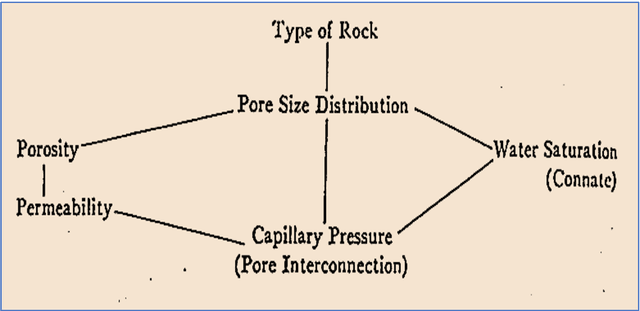
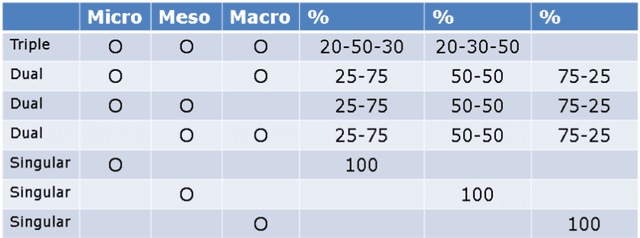

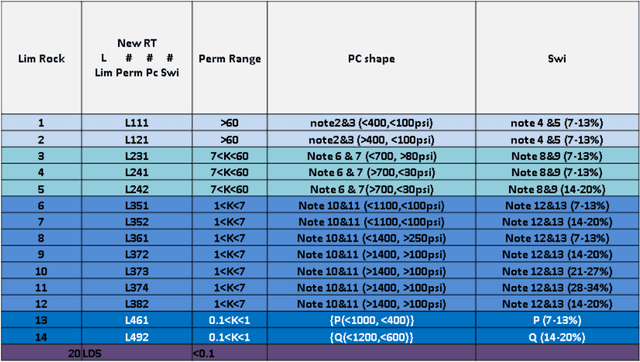
Abstract:Each grid block in a 3D geological model requires a rock type that represents all physical and chemical properties of that block. The properties that classify rock types are lithology, permeability, and capillary pressure. Scientists and engineers determined these properties using conventional laboratory measurements, which embedded destructive methods to the sample or altered some of its properties (i.e., wettability, permeability, and porosity) because the measurements process includes sample crushing, fluid flow, or fluid saturation. Lately, Digital Rock Physics (DRT) has emerged to quantify these properties from micro-Computerized Tomography (uCT) and Magnetic Resonance Imaging (MRI) images. However, the literature did not attempt rock typing in a wholly digital context. We propose performing Digital Rock Typing (DRT) by: (1) integrating the latest DRP advances in a novel process that honors digital rock properties determination, while; (2) digitalizing the latest rock typing approaches in carbonate, and (3) introducing a novel carbonate rock typing process that utilizes computer vision capabilities to provide more insight about the heterogeneous carbonate rock texture.
Morphology Decoder: A Machine Learning Guided 3D Vision Quantifying Heterogenous Rock Permeability for Planetary Surveillance and Robotic Functions
Nov 26, 2021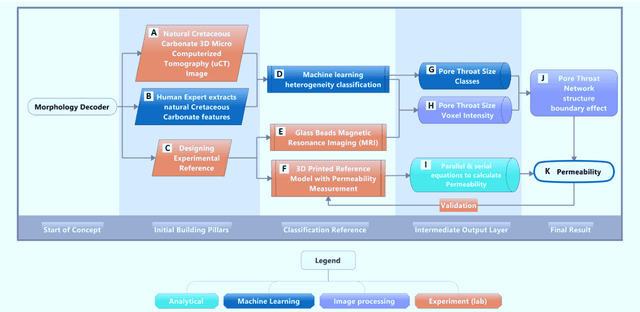

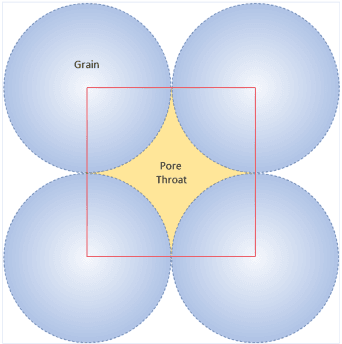

Abstract:Permeability has a dominant influence on the flow properties of a natural fluid. Lattice Boltzmann simulator determines permeability from the nano and micropore network. The simulator holds millions of flow dynamics calculations with its accumulated errors and high consumption of computing power. To efficiently and consistently predict permeability, we propose a morphology decoder, a parallel and serial flow reconstruction of machine learning segmented heterogeneous Cretaceous texture from 3D micro computerized tomography and nuclear magnetic resonance images. For 3D vision, we introduce controllable-measurable-volume as new supervised segmentation, in which a unique set of voxel intensity corresponds to grain and pore throat sizes. The morphology decoder demarks and aggregates the morphologies boundaries in a novel way to produce permeability. Morphology decoder method consists of five novel processes, which describes in this paper, these novel processes are: (1) Geometrical 3D Permeability, (2) Machine Learning guided 3D Properties Recognition of Rock Morphology, (3) 3D Image Properties Integration Model for Permeability, (4) MRI Permeability Imager, and (5) Morphology Decoder (the process that integrates the other four novel processes).
 Add to Chrome
Add to Chrome Add to Firefox
Add to Firefox Add to Edge
Add to Edge